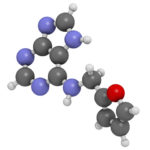Every year, an average of 800,000 people in the US require emergency medical care for a dog bite. Half of these peoples are children — most children that are bitten are between 5 and 9 years old. With this in mind, it is easy to understand why everyone should know the basics of dog bites, and what to do after them. If the dog bite was provoked by the owner or the dog wasn’t properly leashed, then a personal injury attorney may be contacted to support your case and bring a claim against the owner. It is always best to research your options and read down below about the other facts on dog bites to keep yourself informed.
Dog Bite Basic Fact #1: Understand that ANY dog can bite if the circumstances lead to it.
The size, breed or age of a dog won’t ensure a dog won’t bite. In fact, many dogs who bite people were described as mellow and sweet by their owners. It is specific situations that create instances of sudden aggression. The main reasons why dogs bite are fear, anxiety, pain, and less commonly, genetic aggressive tendencies. In general, dogs with aggressive tendencies can be managed but not cured. Aggression isn’t specific to certain breeds; dogs with aggressive tendencies show obvious signs of aggression early in their development; their owners know to be cautious. Other owners will try their best to aid their dogs with different methods to help calm their aggressive behavior. From dietary changes, outlets for their primal instincts, to finding a great way to calm your dog, it is all in the hopes that their aggressive behavior can be pacified.
However, most dogs bite due to fear, anxiety, or pain since owners can be unaware their pets are in distress.
Dog Bite Basic Fact #2 : We might not be aware of a circumstance that might lead to a sudden bite.
Your dog might feel anxious due to a sound, a smell, a new environment, or another dog just to mention a few. We might fail to recognize these distressful stimuli because they’re not threatening to us. Fear can occur suddenly if a dog feels threatened by the presence of a little child (if not acclimated to them), a stranger dog, a veterinarian, the possibility of being deprived of their favorite toy or bed. Dogs that are in pain not always show it until it’s too late, when we have already accidentally touched the painful body part, eliciting a bite as a response.
Dog Bite Basic Fact #3: Dogs that are ready to bite will almost always demonstrate their intention through body language.
Because it can be so challenging to determine which situation has the potential to lead to a dog bite, it is important to monitor your dog’s body language for the very subtle signs an intent to bite. In many occasions, children are bitten under the direct supervision of an attentive parent that failed to recognized that a bite was coming. There are obvious signs like growling and barking, but also more subtle signs like lips that are slightly pulled back (not necessarily showing teeth), lip licking, ears that are pulled back, head kept low and steady, or a fixed indirect stare ( “whale eye”). These signs are red flags that a dog is about to bite. Do not be fooled by a wagging tail if your dog is also displaying aggressive behavior; it just means that your dog is being stimulated by the situation.
If you recognize the signs of an imminent bite, follow these four easy steps to avoid the bite:
- Do not stare at the dog in the eyes (it can be interpreted as a further threat).
- Do not lower your face at the level of the dog’s head (it can be interpreted as a challenge).
- Avoid aggressive games, such as play fighting.
- Do not turn your back to the dog.
To prevent being bitten by your own dog with a tendency of fear or anxiety, there are some measures you should take. If you are able to identify specific situations that lead to biting, avoid them completely (ex. getting rid of a toy). If you cannot avoid the situation retrain the dog to accept the situation through desensitization therapy. What this means is to lead the dog to accept the situation by getting him/her acclimated to it ( ex. tickle the toes daily while offering treats, and progress to touching the toes with the nail clippers, eventually graduating to clipping the nails). Because most dogs bite out of fear, pain or anxiety, it is imperative to avoid dominance methods of obedience such as physical force, punishment, and choke collars. These are outdated methods that only lead to temporary results. In the long-term they will reinforce fear and anxiety, the reasons why the dog started to bite in the first place. Any aggression issue should be reason enough for a trip to the vet for an exam and discussion of the situation with the clinician. Aggression could also be due to medical conditions; for example sudden aggression in an older dog could be due to decreased hearing/ vision, dementia or arthritic pain, among other reasons. A dog with aggression encoded into its genes can be extremely dangerous and warrants a serious discussion with the veterinary clinician for possible management strategies that might include the use of pharmaceuticals and behavior retraining with a veterinarian board certified in behavior. Ultimately, any dog can bite, but a responsible and educated owner knows what precautions to take to avoid it. That being said, if you have been the victim of a dog bite following an interaction with a dog that does not belong to you, there is always a chance that you could be entitled to compensation. Consequently, if you would like to learn more about the law surrounding dog bite cases, be sure to reach out to a personal injury law specialist in your area.
Dr Marta Sanchez-Emden is the founder of the Animal Health and Rehab Center in South Miami. She has been practicing Veterinary Medicine in Miami for over 20 years. As a Certified Veterinary Journalist, she is the resident veterinarian for various national TV shows. She authored the book “CHIHUAHUAS: How to Be Your Dog’s Best Friend,” available on Amazon. Follow her at youtube.com/ahrcvet, Facebook.com/dr.sanchezemden, Twitter @DrMartavet, and www.animalhealthrehab.com.














 Deering Estate
Deering Estate
 Massage Envy South Miami
Massage Envy South Miami
 Calla Blow Dry
Calla Blow Dry
 My Derma Clinic
My Derma Clinic
 Sushi Maki
Sushi Maki
 Sports Grill
Sports Grill
 The Healthy Kitchen
The Healthy Kitchen
 Golden Rule Seafood
Golden Rule Seafood
 Malanga Cuban Café
Malanga Cuban Café

 Kathleen Ballard
Kathleen Ballard
 Panter, Panter & Sampedro
Panter, Panter & Sampedro
 Vintage Liquors
Vintage Liquors
 The Dog from Ipanema
The Dog from Ipanema
 Rubinstein Family Chiropractic
Rubinstein Family Chiropractic
 Your Pet’s Best
Your Pet’s Best
 Indigo Republic
Indigo Republic




 ATR Luxury Homes
ATR Luxury Homes


 2112 Design Studio
2112 Design Studio
 Hamilton Fox & Company
Hamilton Fox & Company
 Creative Design Services
Creative Design Services
 Best Pest Professionals
Best Pest Professionals
 HD Tree Services
HD Tree Services
 Trinity Air Conditioning Company
Trinity Air Conditioning Company
 Cisca Construction & Development
Cisca Construction & Development
 Mosquito Joe
Mosquito Joe
 Cutler Bay Solar Solutions
Cutler Bay Solar Solutions


 Miami Royal Ballet & Dance
Miami Royal Ballet & Dance
 Christopher Columbus
Christopher Columbus
 Pineview Preschools
Pineview Preschools
 Westminster
Westminster
 Carrollton
Carrollton
 Lil’ Jungle
Lil’ Jungle
 Frost Science Museum
Frost Science Museum
 Palmer Trinity School
Palmer Trinity School
 South Florida Music
South Florida Music
 Pinecrest Orthodontics
Pinecrest Orthodontics
 Dr. Bob Pediatric Dentist
Dr. Bob Pediatric Dentist
 d.pediatrics
d.pediatrics
 South Miami Women’s Health
South Miami Women’s Health

 The Spot Barbershop
The Spot Barbershop
 My Derma Clinic
My Derma Clinic




 Miami Dance Project
Miami Dance Project

 Rubinstein Family Chiropractic
Rubinstein Family Chiropractic
 Indigo Republic
Indigo Republic

 Safes Universe
Safes Universe
 Vintage Liquors
Vintage Liquors
 Evenings Delight
Evenings Delight





 Atchana’s Homegrown Thai
Atchana’s Homegrown Thai
 Baptist Health South Florida
Baptist Health South Florida

 Laser Eye Center of Miami
Laser Eye Center of Miami
 Visiting Angels
Visiting Angels
 OpusCare of South Florida
OpusCare of South Florida

 Your Pet’s Best
Your Pet’s Best





 HD Tree Services
HD Tree Services
 Hamilton Fox & Company
Hamilton Fox & Company


 Creative Design Services
Creative Design Services